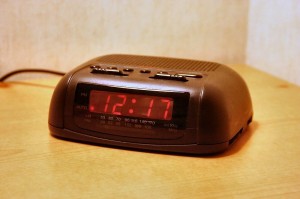Today (or maybe tomorrow? I’m still not sure) is the day that the hours change for those of us on Duke Energy Progress’s Time Of Use (TOU) electric billing plans. When you’re a grid-tied solar electricity provider like we are, Duke puts you on a TOU plan so that you are encouraged to use most of your electricity off-peak. The change in electric season is like Daylight Saving Time for our electric bills.
Peak hours in winter are from 6 AM to 1 PM and from 4 PM to 9 PM. Summer peak hours are from 10 AM to 9 PM. This means we can run our dryer or charge our electric car in the morning, rather than hold off until after 9 PM, which is a good thing.
I made a handy chart to help keep track of these schedules but haven’t shared it yet since I want to incorporate suggestions that Kelly made. Hopefully I’ll get it posted soon.
